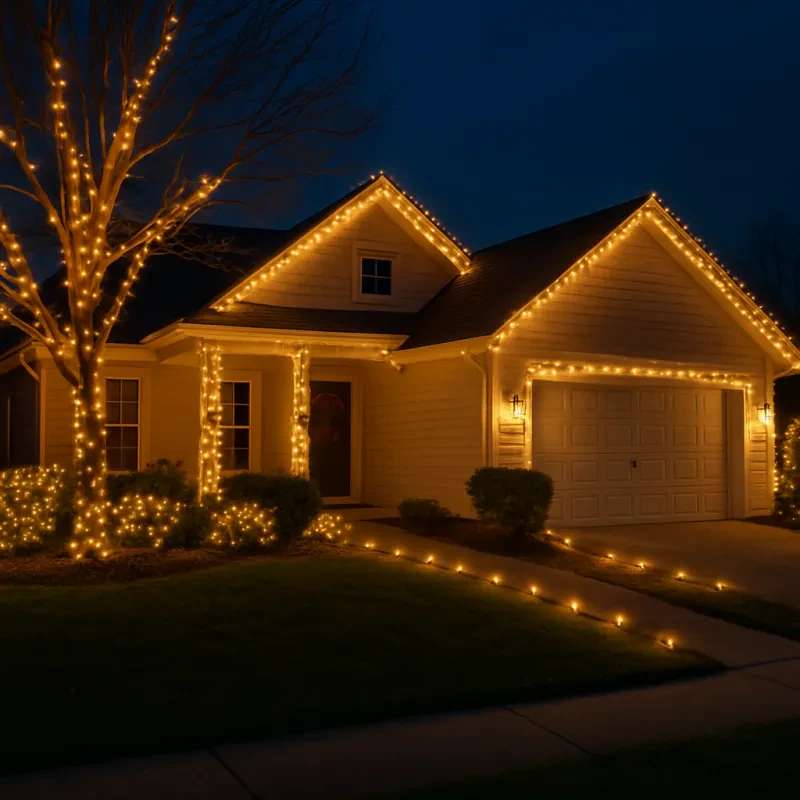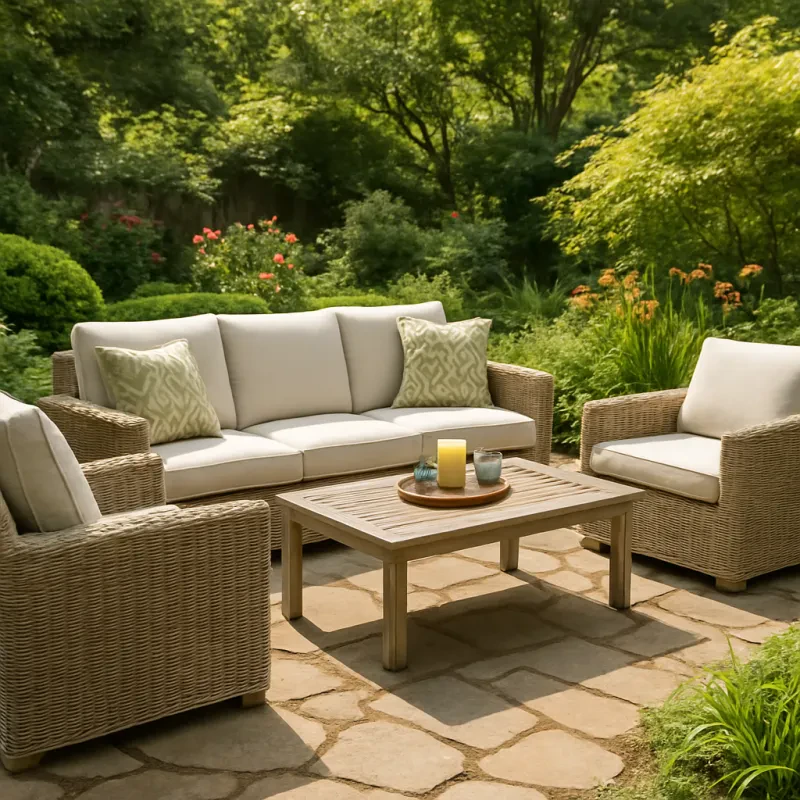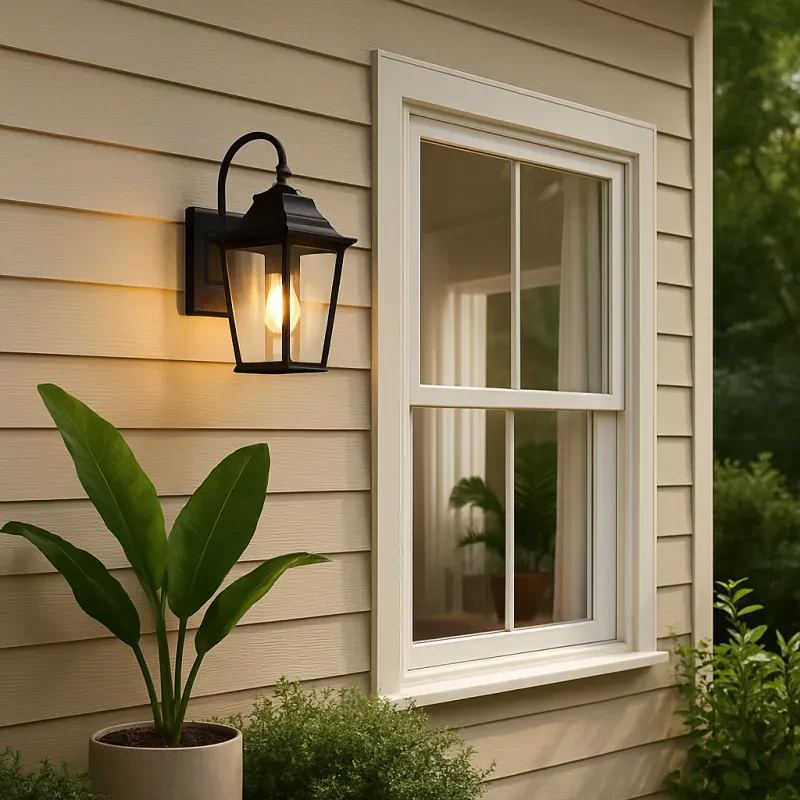Choosing the right material for your outdoor table is essential to ensuring it not only complements your space but also stands the test of time. When considering materials, think about your climate, usage, and style preferences. Different materials offer unique aesthetics and durability, so it’s important to weigh the options carefully.
Wood is a popular choice for outdoor tables due to its natural beauty and warmth. Teak, eucalyptus, and cedar are excellent choices as they are naturally resistant to moisture and pests. However, wood does require some maintenance, such as sealing and regular cleaning, to maintain its appearance and longevity. If you love the rustic look, wood might be the ideal material for you.
If you're looking for something more modern, metal tables, particularly aluminum or stainless steel, are a fantastic option. They are lightweight, easy to clean, and highly resistant to rust and corrosion. Metal tables often have sleek designs that can easily fit into contemporary outdoor settings. Just remember to check for features like powder coating, which adds extra protection against the elements.
For a low-maintenance choice, consider a table made from high-density polyethylene (HDPE) or other synthetic materials. These tables are designed to withstand outdoor conditions and resist fading, cracking, or peeling. Available in a variety of colors and styles, synthetic tables are perfect for those who want a stylish option that requires minimal upkeep.
Finally, don’t overlook the benefits of mixed materials. Tables combining wood and metal or incorporating glass can create a striking visual contrast. This approach allows you to enjoy the best of both worlds while ensuring durability and style. Whatever material you choose, make sure it aligns with your lifestyle and enhances your outdoor experience.
Styles That Enhance Your Outdoor Space
When it comes to creating an inviting outdoor space, the right styles can make all the difference. You want your area to be not just functional but also visually appealing. Consider incorporating natural elements, such as wood and stone, that blend seamlessly with your environment. A rustic wooden table, paired with sturdy stone benches, can create an earthy and cozy atmosphere, perfect for family gatherings or afternoon coffee with friends.
Another popular trend is the use of vibrant colors and patterns. Brightly colored tableware or patterned cushions can inject life into your outdoor area. Think about adding colorful table runners or placemats that can draw the eye and complement your table. These small touches make your space feel playful and inviting, encouraging everyone to linger a bit longer.
Incorporating varying heights and textures can also enhance your outdoor experience. Mix and match low coffee tables with taller dining options to create a dynamic setting. Adding lanterns, candles, or even hanging string lights can introduce warmth during evening gatherings. The soft, flickering light from candles or lanterns draws people in and makes the space feel magical after sunset.
Lastly, don’t forget the power of greenery. Potted plants or hanging planters can add a fresh, vibrant look to your outdoor area. Choose plants that bloom seasonally to ensure your space always feels alive and dynamic. Place them strategically around your table or hang them from overhead beams to create a lush, inviting atmosphere. With these styles, your outdoor space will become a stylish extension of your home, ready for any occasion.
Finding the Ideal Size for Comfort
When it comes to choosing an outdoor table, size plays a crucial role in ensuring both comfort and functionality. An ideal outdoor table should not only fit well within your space but also accommodate the number of guests you plan to host frequently. Before making a purchase, measure the area where you plan to place the table. Make sure to leave enough room for chairs and for people to move around without feeling cramped.
Consider Your Needs: Think about how you will use your outdoor table. If you envision large family gatherings or entertaining friends, opt for a larger table that can comfortably seat 6-10 people. On the other hand, if you prefer intimate dinners or coffee catch-ups, a smaller table may be more appropriate. It’s also worth considering whether you want extendable options for those rare occasions when extra seating is necessary.
Height Matters: In addition to the width and length, the height of the table is another essential factor to consider. Standard dining tables typically range from 28 to 30 inches in height, while bistro tables are generally around 28 to 32 inches tall. Choosing the right height can enhance the dining experience, so match your table size with the height of your chairs for a harmonious look and feel.
Shape Influences Comfort: The shape of the table can also affect comfort. Rectangular tables are perfect for long, leisurely meals, while round tables can facilitate conversation and are great for smaller spaces. Additionally, oval tables combine the benefits of both shapes and can work wonders in medium-sized areas. Think about the layout of your outdoor space and how different shapes will influence movement and social interaction.
Caring for Your Outdoor Table Long-term
To ensure your outdoor table remains a centerpiece of your patio for years to come, regular maintenance is key. Start by cleaning your table regularly to remove dirt and grime that can accumulate. Use a mild soap and water solution with a soft cloth to wipe down the surface. For tougher stains, a gentle scrub with a soft-bristle brush can do wonders without damaging the finish.
Protecting your table from the elements is another essential step in long-term care. If your table is made of wood, consider applying a wood sealant or outdoor varnish to shield it from moisture and UV rays. Metal tables may need a coat of rust-resistant paint to keep them looking fresh and to prevent corrosion. If your table is made from glass, ensure you use glass cleaner to keep the surface clear and reflective.
Moreover, investing in a quality cover is an excellent way to protect your table from harsh weather conditions, especially during seasons when it may not be in use. Simply draping a cover over your table can prevent fading due to sun exposure, damage from rain, or even debris buildup from falling leaves. Ensure the cover is breathable to avoid trapping moisture underneath.
Lastly, consider bringing your outdoor table indoors during extreme weather or when you know it won’t be used for an extended period. This extra step can make a big difference in preserving the integrity of your table, allowing you to enjoy it for many seasons to come. Taking these simple precautions will keep your outdoor table serving looks and function for years ahead!


